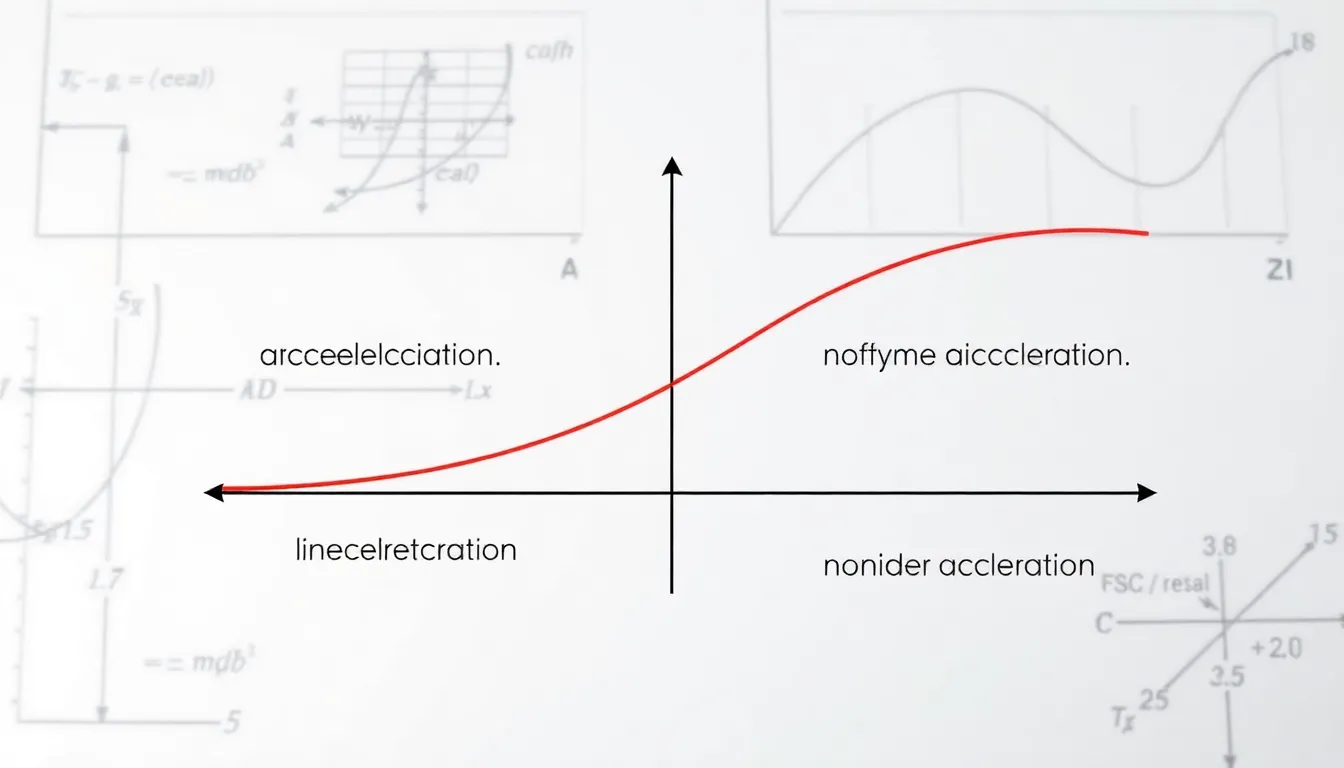In the fast-paced world of physics and engineering, acceleration curves are the unsung heroes that help us understand how objects pick up speed. Imagine trying to chase down your dreams without a clear path—frustrating, right? Acceleration curves provide that roadmap, revealing how quickly something can go from zero to “Whoa!” Whether it’s a sports car zooming down the highway or a roller coaster climbing to thrilling heights, these curves show us the magic of speed in action.
Understanding Acceleration Curves
Acceleration curves represent the relationship between an object’s speed and the time taken to reach that speed. These curves provide insight into the dynamics of motion, revealing how acceleration affects performance.
Definition and Importance
Acceleration curves graphically illustrate the rate of change in velocity over time, forming a crucial component in physics and engineering. Each curve conveys information about how quickly an object can speed up, influencing design decisions in various situations. Understanding these curves assists engineers in optimizing vehicle performance, ensuring safety, and enhancing energy efficiency. In fields like car manufacturing, acceleration curves serve as benchmarks. They enable the comparison of different models, facilitating informed choices for consumers.
Applications in Various Fields
Professionals in multiple industries utilize acceleration curves to enhance performance. In automotive engineering, these curves evaluate engine response and handling dynamics. They help designers create vehicles that excel in acceleration without compromising safety. Aerospace engineers rely on acceleration curves when designing aircraft, ensuring they meet specific performance criteria during takeoff and landing. Additionally, the entertainment industry uses acceleration curves in amusement park design, ensuring thrilling yet safe ride experiences. Understanding acceleration curves contributes to improved functionality across diverse applications, making them indispensable in modern engineering practices.
Types of Acceleration Curves

Acceleration curves can be classified primarily into two categories: linear and non-linear. Each type serves distinct purposes in analyzing motion dynamics.
Linear Acceleration Curves
Linear acceleration curves represent a constant rate of change in velocity over time. These curves show a straight-line graph, indicating uniform acceleration. For example, a vehicle accelerating steadily at a rate of 5 meters per second squared illustrates this concept. In such cases, the speed increases predictably. Engineers often use linear curves to simplify complex motion scenarios, making them easy to analyze. This approach aids in designing vehicles that exhibit consistent performance under standard conditions.
Non-Linear Acceleration Curves
Non-linear acceleration curves depict variable rates of acceleration. These curves create complex shapes, highlighting changes in velocity that occur at differing rates. For instance, a sports car that accelerates rapidly at first, then gradually increases speed, exemplifies a non-linear curve. In this scenario, the graph begins steep and becomes less steep over time. Engineers often employ non-linear curves for more intricate performance evaluations. These curves assist in understanding real-world applications like roller coasters, where rapid changes in speed occur.
Key Factors Influencing Acceleration Curves
Acceleration curves are influenced by various factors that affect how an object accelerates. Understanding these factors is crucial for optimizing performance and safety.
External Factors
Environmental conditions significantly affect acceleration curves. Temperature plays a role in engine efficiency, impacting overall performance. Road or track surface conditions also contribute to traction variations, influencing acceleration rates. Wind resistance can alter performance characteristics, particularly for vehicles reaching high speeds. Weather elements, like rain or snow, impede grip and increase stopping distances. Proper data analysis can improve design and predict behavior under different external influences.
Internal Factors
The design of an object influences its acceleration curve. Engine power and torque determine how quickly a vehicle can accelerate. Weight distribution affects handling dynamics, contributing to stability during acceleration. Suspension systems play a vital role in maintaining tire contact with the ground. Aerodynamics significantly impacts airflow around the object, affecting drag and stability at higher speeds. Material properties of components can influence strength and weight, guiding design decisions to improve overall performance.
Analyzing Acceleration Curves
Acceleration curves provide valuable insights into motion. Understanding these curves enhances performance optimization across various fields.
Techniques for Analysis
Utilizing graphs allows a visual representation of acceleration rates. Engineers often employ software tools for comprehensive data modeling. Statistical methods help evaluate the relationship between speed and time. Detailed simulations enable testing scenarios that inform design decisions. These techniques facilitate better predictions regarding object behavior under different conditions.
Common Challenges in Interpretation
Interpreting acceleration curves poses several challenges. Variability in environmental factors complicates the analysis process. Uncertainties in data collection can skew results, leading to inaccurate conclusions. Non-linear curves often create difficulties in identifying precisely how speed changes over time. Engineers must also consider discrepancies caused by external influences, such as road conditions and weather, which can affect acceleration rates significantly.
Accelerating Technologies and Future Trends
Innovations in technology continue to influence acceleration curves, significantly transforming their applications across various fields. Many engineers leverage advanced materials and smart systems to refine performance. Battery technologies now enhance electric vehicle acceleration, making them competitive with traditional combustion engines. Similarly, developments in computational modeling allow for real-time adjustments in vehicle dynamics, improving responsiveness.
Data analytics tools have emerged as essential resources for engineers, aiding in the understanding of complex acceleration patterns. These innovations not only optimize designs but also ensure safety and efficiency in high-speed applications.
Innovations Impacting Acceleration Curves
Engineers explore several innovations that reshape acceleration curves. Electric drivetrains provide rapid acceleration with instant torque delivery, drastically changing automotive performance metrics. Advanced aerodynamics also enhance stability during high-speed maneuvers, further refining acceleration profiles. Moreover, machine learning algorithms process vast datasets, identifying patterns that inform design decisions.
Smart sensors add another layer of precision, monitoring real-time performance and adapting to changing conditions. By integrating these technologies, industries can create acceleration curves that better represent actual performance under varied circumstances.
Future Research Directions
Future research will focus on specific areas to advance the understanding of acceleration curves. Exploring hybrid propulsion systems could reveal unique acceleration characteristics that blend electric and traditional power sources. Investigating the impact of varying surface materials on acceleration dynamics will enhance applications in automotive and aerospace sectors.
Additionally, researchers aim to develop predictive models that account for environmental variables. Improving simulations to include real-world data will refine accuracy in acceleration predictions. Exploring human interfacing with acceleration systems may also enhance user experience and vehicle control, paving the way for safer designs.
Acceleration curves play a pivotal role in various fields by providing a deeper understanding of speed dynamics. Their application ranges from automotive engineering to amusement park design, illustrating how they influence performance and safety. By analyzing both linear and non-linear curves, engineers can optimize designs and enhance user experiences.
As technology continues to advance, the future of acceleration curves looks promising. Innovations in materials and smart systems are set to redefine how acceleration is perceived and utilized. Continued research into hybrid systems and real-time data analytics will further enhance the precision of acceleration modeling. Embracing these developments will ensure that engineers remain at the forefront of performance optimization and safety in high-speed applications.





